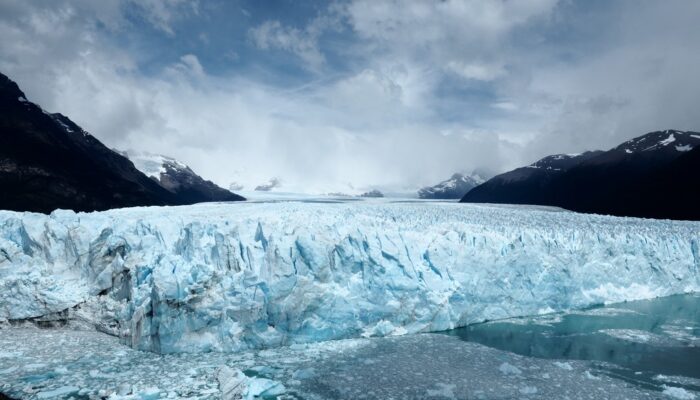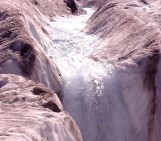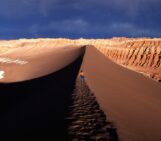
Human impacts on the climate are nowadays clearly discernible, and the changes to our climate that previously happened in geologic time scales are currently happening during the span of a human lifetime. Our planet is warming and temperature today is now more than 1°C higher than it was in the pre-industrial world and rises by about 0.15-0.2°C on average each decade. The dramatic effects of this rapid climate change are appearing right now: the increasing temperatures are melting glaciers and sea ice all over the world, shifting precipitation patterns and inducing extreme weather events, destroying habitats and forcing animals and people to migrate.
In this climate changing system, glaciers and sea ice represent very fragile elements. Glacier ice occupies about 10 percent of the world’s total land area and stores around 70 percent of the world’s total freshwater. When glaciers melt, freshwater is lost and flows into the seas raising the average global sea level. Since the surface of ice reflects sunlight, and thus heat, ice loss intensifies global warming. Despite this global glacier-melting trend, there are a few glaciers that are growing, one of which is the Perito Moreno Glacier. Scientists are not exactly sure why this glacier is advancing instead of retreating, but some hypothesize that precipitation shifts due to climate change or the glacier’s steep angle could be responsible for the phenomenon.
Located in southwest Santa Cruz Province of Argentina, the Perito Moreno Glacier is one of the region’s many glaciers, which collectively cover about half of the surface of Los Glaciares National Park, a UNESCO World Heritage Site. The glacier belongs to the Southern Patagonian Ice Field, which is the third largest freshwater reserve on the planet after the Antarctic and Greenland ice sheets. Perito Moreno Glacier descends from about 2100 metres in the Andes Mountains, down into the water of Lago Argentino at about 180 metres above sea level. It stretches for 30 km in length and 5 km in width (roughly equivalent in size to the Belgian capital Brussels) and rises 70 meters above the water surface of the lake. The glacier was formed during the last ice age, and is estimated to be 18,000 years old.
The current picture captures the front of the Perito Moreno Glacier from the Lago Argentino bank. By walking the last kilometres of the road which follows the lake shore from the entrance of the park to the main viewpoint, suddenly from between the green of the forest and the turquoise of the lake your sight is captured by the glacier: the white sleeping giant which lays quietly between the sides of the mountains. Coming closer and closer you start to feel the fresh air coming from the mouth of the glacier and hear its noisy breathing produced by the incessant ice cracking. From time to time you can also witness its mumbling, caused by calving ice slabs that fall into the water. The beauty of Perito Moreno Glacier is impressive, however its resistance against climate change is much more incredible. How long will this glacier still be able to resist?
By Magdalena Stefanova Vassileva, GFZ German Research Centre for Geosciences, Germany
Imaggeo is the EGU’s online open access geosciences image repository. All geoscientists (and others) can submit their photographs and videos to this repository and, since it is open access, these images can be used for free by scientists for their presentations or publications, by educators and the general public, and some images can even be used freely for commercial purposes. Photographers also retain full rights of use, as Imaggeo images are licensed and distributed by the EGU under a Creative Commons licence. Submit your photos at http://imaggeo.egu.eu/upload/.




